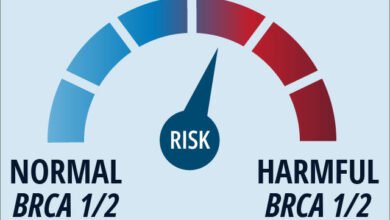Asbestos-Containing Ship Sunk Off Brazilian Coast

In early February 2023, Brazil sank an asbestos-containing ship over objections from environmental groups. This event was the result of months of uncertainty over the fate of the decommissioned aircraft carrier, named São Paulo.
The ship contained asbestos in the form of insulation. Asbestos insulation was common in naval vessels made during the 20th century. The story of the São Paulo demonstrates how past asbestos use still creates problems in the present day.
History of the Asbestos-Containing Aircraft Carrier
In 2021, a Turkish company bought the aircraft carrier with the intention of recycling it. The ship began its journey from Brazil to Turkey in the summer of 2022.
By the time the ship left Brazil, a campaign was underway in Turkey to fight its importation. Environmental groups believed the ship contained more than the 9 tons of asbestos that had been reported. An analysis by one of these groups prompted Turkish officials to ask Brazil for a new inventory of hazardous substances aboard the ship.
Dissatisfied with the new report, Turkish officials canceled the ship’s import permission. As a result, the ship had to turn back.
An environmental treaty required Brazil to re-import the ship. But Brazilian officials pressured ports to not let the ship dock. As a result, in October 2022, the ship began circling off the coast.
Aircraft Carrier Sunk Despite Warnings From Environmental Groups
Despite concerns, Brazil sank the ship off the coast rather than re-import it. In response, environmentalists accused Brazil of violating several international treaties.
The ship contained several dangerous substances, including:
- Asbestos insulation
- Dangerous gasses that accumulated in ship compartments
- Heavy metals
- Other toxins
These substances now risk contaminating the water. They have the potential to affect the marine food chain and cause other environmental damage.
Asbestos on Ships Continues to Pose Threats to U.S. Navy Personnel
The world continues to deal with problems created by industrial asbestos use during the 20th century. The story of the São Paulo is just the latest example. In the United States, the Navy commonly used asbestos products until the 1980s. As a result, U.S. Navy veterans and other Navy personnel have a high risk of developing mesothelioma from asbestos exposure.
Asbestos in ships and at shipyards still poses a risk in many places. For example, workers servicing older ships or equipment may come into contact with asbestos products. The same goes for workers decommissioning ships. Products on old ships that may contain asbestos include:
If asbestos from these products becomes airborne, workers may inhale the fibers. This can later lead to asbestos diseases, like mesothelioma and lung cancer.
How to Protect Navy Personnel From Asbestos Exposure
The United States government and Navy have programs in place related to asbestos exposure from ships. The Occupational Safety and Health Administration (OSHA) requires ships and shipyards to undergo safety inspections. OSHA also has asbestos-handling regulations.
The Navy has created a program to monitor the health of veterans who may have been exposed. This can help detect mesothelioma early in veterans. Early diagnosis is generally associated with better treatment outcomes in mesothelioma patients.
Asbestos continues to pose a threat to people like Navy personnel. Better asbestos laws, regulations and programs can help prevent exposure and treat those who have been exposed.
Source link
#AsbestosContaining #Ship #Sunk #Brazilian #Coast



